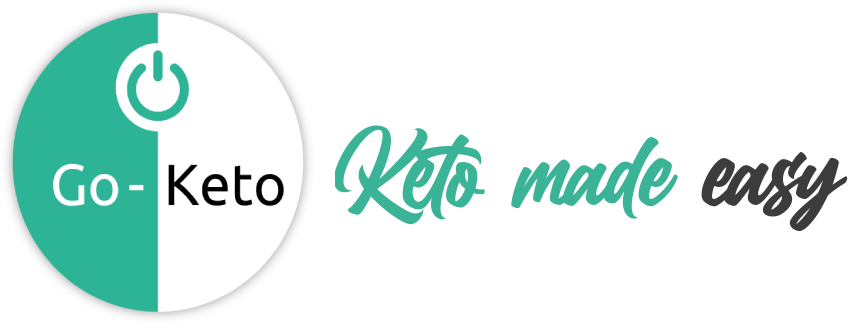When you’re starting out on the keto diet, your first focus is getting into ketosis – the state in which your body sources energy from fat instead of carbs. The keto diet is the best way to do this and will help you maintain ketosis. In this article, we explain everything you need to know about ketosis for a successful keto journey – whether your aim is to lose weight, boost your health or perform better!
In this article:
- Carb burning vs. ketosis – what’s the difference
- How do you get into ketosis
- How do you know if you’re in ketosis
- Measuring ketones is key
- Ketosis is natural and safe (but ketoacidosis is dangerous)
Carb burning: how it works
In most diets, carbohydrates are the main fuel. To be precise – you eat carb-rich foods, from which you derive glucose (sugar), which quickly enters your blood stream. The glucose in your blood triggers the production of the hormone insulin, which is needed to transform the glucose into a form that your cells can use as energy: glycogen. It should be noted that some of your organs will always require minimal amounts of glycogen to function and some glycogen is always kept stored in your muscle tissue, to give you instant energy for dealing with a sudden threat or emergency. This is why you still need about 20g of carbs a day, even when you’re on the keto diet.
The Glycaemic Index (GI)
The swiftness with which carbs are metabolized into energy depends on the so-called Glycaemic Index (GI) of the food consumed. The GI reflects factors such as the concentration of glucose in the food and the presence of other substances such as fat, protein and fibre. The higher the GI, the faster the insulin response and the quicker the energy is released. Pure, undiluted glucose has a GI of 100, whereas wholegrain rice, with a GI of 55, is medium. Carb free foods such as fats and oils have a GI of 0.
Glucose highs and lows
Eating lots of (high-GI) carb-rich food may start to cause problems at some point, because it can cause your insulin and glucose levels to go up and down too fast. Which may lead to the following weight gaining, energy-sapping scenario: you feel hungry – you stuff yourself with carb-rich food – your glucose level peaks – your insulin level peaks – your glucose drops swiftly – you experience a dip and feel peckish again – you grab a sweet snack again – and there you go again… You just can’t seem to stop eating! If you’ve been there, you know exactly what we’re talking about. Ketosis, which can lower and stabilize glucose levels and is known to regulate appetite, can be a great way to stop this race to the bottom and start losing weight.
About ketosis: what is it?
Ketosis is the state in which you primarily get your energy from fat. This is very different from the glucose/carb-centred metabolism. Since your body has a preference for getting energy from carbs, you will only arrive at ketosis when you have depleted most of your glucose reserves. When that happens, your body starts breaking down available fat and fat reserves into fatty acids. The liver then metabolizes these fatty acids into a type of water-soluble molecules known as ketones – the technical name is beta-Hydroxybutyrate (bHb). When plenty of ketones are available, they will supply your body with energy. Once that process has started, you are in ketosis.
Getting into ketosis: how to go keto

Basically, this is what you do:
1. Reduce your carbohydrates drastically.
2. Stick to a moderate intake of protein.
3. Eat a lot more fat.
One of the most appealing things of the keto diet is that you don’t need to count calories to lose weight and you can eat as much as you like, provided that the ratio between your macronutrients (macros) – carbs, protein and fat – is correct. The beauty of keto is that you feel much better satiated than when you eat carbs, which keeps you from overeating and makes weight loss easy and natural
| Carbs | Protein | Fat | |
| Keto macros | 5% | 25% | 70% |
| ‘Regular’ macros | 50% | 25% | 25% |
When you eat keto for a 2 to 5 days, your body will enter ketosis. There’s no saying how long it will take exactly; it depends on how successfully you cut the carbs and it also seems differ from person to person.
If you would like to have more specific guidelines to optimize weight loss, you can use the Go-Keto Calculator elsewhere in our Academy to find an indication of your personal macros and the amounts you might eat of each macronutrient. Just keep in mind that the ratio between them is far more important than the actual amounts that you eat – as long as you keep a low carb level.
To meet your macros, you need to avoid high-carb foods and use high-fat food instead. The following list is a good place to start:
- Eat: meat, (fatty) fish, eggs, full-fat cheese, butter, cream, vegetable oil, nuts, seeds, low-carb vegetables, berries. Eat unprocessed, non-inflammatory foods as much as possible.
- Avoid: sugar, candy, bread, wheat and cereal products, pasta, rice, potatoes, legumes, crisps, cakes, snacks and fast food, most fruits
Obviously, this is a very general list, intended to give you an impression of what it means to eat keto. When you start on the diet, you need to be more precise. By consistently checking the amounts of carbs, protein and fat in your food you will learn to make the correct choices. Especially when you begin, an app that shows you nutritional values, like MyFitnessPal or Yazio, can be a great help. As you progress on your keto journey, your carb awareness will grow to the point where you only have to check now and then.
Clean keto, the way to go!
Did you notice? The keto diet is naturally gluten free! For many, staying away from gluten can help digestion and reduce inflammation. Reduced inflammation is in fact one of the reasons why so many people feel they flourish on keto. Especially if they focus on clean keto, the keto diet based on eating a wide variety of unprocessed whole food with lots of (bio) vegetables, preferably bio (as opposed to dirty keto where you just eat anything, even junk food, as long as it’s fat and low-carb – needless to say, we don’t advocate this!). Clean keto is not just a great way to lose weight, but also to improve your overall health and wellbeing, as well as your performance! Here are some super keto recipes to inspire you:
And let’s not forget: with the right keto ingredients like the sweetener erythritol, almond flour and ghee, your can work wonders in the sweets and baking department as well:
Hazelnut cake with chocolate buttercream
Go-Keto MCT Energy Bomb vanilla keto muffins
Keto food and how to find it
The basis of clean keto is plain, unprocessed whole food which is available in regular (bio) grocery stores that you prepare according to your own preference and macros. There are also some types of food that can be very beneficial to your keto journey and some of these are not readily available in the usual shops. For instance MCT Oil, which it the best fat for keto, giving you a super-fast ketone energy boost. Go-Keto has it! Besides that, it’s only normal that you should want a treat every now and then, or a ready-made, comfort solution for emergencies, when you’re pressed for time or on the go. And since such keto foods are not so easy to find, it’s good to know that you can find the best clean, vegan, gluten free and keto-safe food and snacks right here at Go-Keto. Check out some of our bestsellers.
How can you tell if you’re in ketosis?
Ketosis isn’t something you can see or feel with any certainty. If you want top be sure, you need to measure your ketone levels. Nevertheless, there are some physical signs that might occur when you’re in ketosis.
- Frequent urination. Carbs retain fluid, which you lose when you start limiting carbs. This is often the earliest sign that something is changing.
- Some people may experience low energy, headaches or muscle pain as they get into ketosis. This stage is called ‘keto-flu’, but there is no flu involved. It means may need to see to your electrolyte balance. Together with fluid, you may lose minerals (electrolytes) as well, which are important for hydration.
- Watch out for constipation: you miss the dietary fibre from grain products and you lose fluid. Drink lots of water, get enough exercise and eat your veggies. Nuts can also help.
- You get an appetite for salt. Salt is one of the most important electrolytes, which you may be losing, so you might need a little more than usual.
- Improved mental clarity and focus. This comes with stable sugar levels and clean fuel for your brain. You may start noticing this after a week or two.
- Improved energy. You may feel a bit sluggish in the beginning, but when the keto flu fades, your energy is likely to surge.
- Improved digestion. Apart from the risk of constipation at the outset, digestion usually improves significantly as a result of eating clean, wholesome gluten-free food and fats.
- Hunger pangs tend to disappear. Ketosis stabilizes your glucose and insulin levels and this regulates your appetite. Notice how you just seem to forget all about snacks and sweets?
Measuring your ketone levels
As you will have noted, these signs are not very specific and could be just accidental or from other causes. If you want to know if you’re in ketosis, there is only one way to find out for sure: measuring your ketone levels. You can do this by using urine strips (affordable and convenient, but not very accurate), but if you’re serious about your keto diet, we strongly advise you to get yourself the Go-Keto Kickstart Set with the very easy and accurate Go-Keto blood ketone and glucose Meter and to use it together with the Go-Keto App. It will help you to really finetune your diet and keep you motivated by showing you clear results of your efforts!
Do you want to know more about the best ways to track your keto journey? Check out the articles in our Academy about the options for measuring ketones and the benefits of tracking your Glucose Ketone Index (GKI). Or check out this video where Go-Keto Founder Ben Nordemann explains how to use the Go-Keto Meter.
Staying in ketosis
To stay in ketosis, you simply need to stick to the diet – always remember that strictness pays off. This is not a diet in which you can ‘cheat’ with just one cookie or sweet snack, like most other diets. Eating carb-rich food will inevitably bring you out of ketosis, meaning that you’re back to square one. You weight loss will stop, and as we’ve seen, getting into ketosis takes time and energy. It’s not worth it! Keep in mind that sweet cravings will probably very soon be a thing of the past. Once you get used to being in ketosis, it will become easier and more comfortable that you can imagine.
A natural metabolic state
Ketosis is a natural and practical way of getting energy. It shows the flexibility of our human metabolism. With the wide availability of all sorts of food in our modern-day culture, we’re really a species on vacation. Our bodies, however, are still capable of adapting to all sorts of circumstances and surviving on a wide a variety of food sources – we can even cope with a lack of it to some extent. Ketosis will for instance occur quite naturally when we fast for a while. Our system may also occasionally revert to it during longer periods of sustained activity such as endurance sports, making it possible to keep up energy and run smoothly on our fat reserves.
Can ketosis be dangerous?
Obviously then, ketosis is a safe and natural metabolic state for healthy people. The question about danger seems to come up because of the association with so-called ketoacidosis, a serious condition which only affects Type 1 Diabetics (and extremely rarely, people with Type 2). It can occur when a diabetic’s glucose and insulin balance gets severely upset due to illness or other disruptive factors. In a vain effort to get energy, the body will start breaking down muscle and fat tissue, which produces enormous amounts of ketones and other acids like acetone, effectively poisoning the patient. Ketoacidosis is potentially fatal and must be treated in hospital without delay. As you can see, it’s very different from ketosis as a metabolic state.
When not to go keto
While keto can be beneficial for Type 2 diabetics if properly managed, it’s usually not recommended for type 1. As a rule, diabetics of either type should not go on any diet, keto included, without first consulting their health practitioner. Also, the keto diet is not suitable for:
- pregnant or breastfeeding women
- people with gallbladder, liver or kidney conditions
- children growing up.




